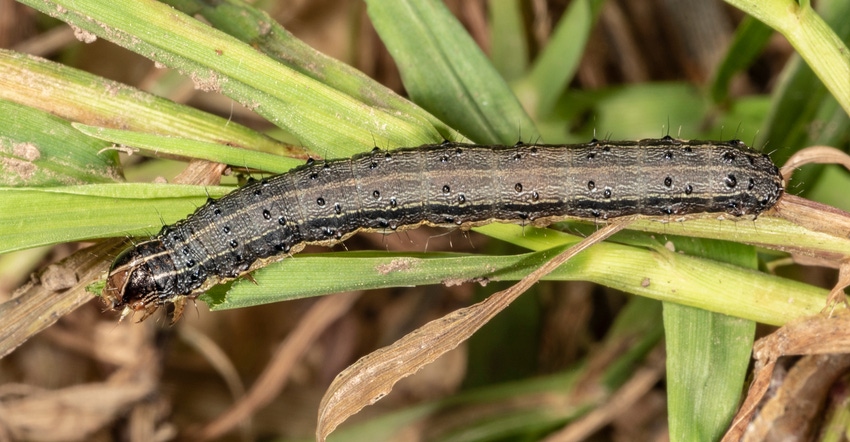January 6, 2022

Fall armyworms were a big deal late last year. Does that mean they’re more likely to show up this spring in corn? What strategy should I use for usually minor pests like armyworms, fall armyworms, cutworms and wireworms?
The Indiana certified crop advisers panel answering this question includes Steve Gauck, a regional agronomy manager for Beck’s, Greensburg; Jeff Nagel, an agronomist with Ceres Solutions, Lafayette; and Dan Ritter, an agronomist with Dairyland Seed, Rensselaer.
Gauck: The pests you mention all take different management strategies. You must scout for them all.
Wireworms are a belowground pest that you must consider before planting. Using a seed treatment or in-furrow application of insecticide is the only defenses.
Cutworms need to be scouted early. Keeping an eye on moth flights will determine when to scout and spray. Cutworms can move quickly but fortunately are easy to control.
Armyworms are still a wild card. We normally don’t see large pressures every year. They struggle to overwinter in harsh conditions. Be prepared to scout, starting with fields near pastures or large grass areas. Armyworms are also easy to control but can cause damage quickly. Watch moth flights to determine when hatches are occurring to help time scouting trips.
Nagel: Yes, 2021 was the year for fall armyworm. Numbers were impressive in some areas. Since they are a migratory insect, high numbers one year doesn’t mean they will be a problem the next year. Most agronomists don’t ever recall seeing fall armyworm pressure as high here as in 2021. Fall armyworms have a wide host range but prefer grassy crops like late-planted corn and pastures. In 2021, fall armyworms seemed to be attracted to alfalfa fields, but also pastures and even some lawns.
Armyworms, including fall armyworms, overwinter in southern areas. Moths migrate north each year. Fall armyworm moths usually begin arriving in late June to July, mate and lay eggs. Larvae hatch and begin feeding. The larvae go through six instar stages, but nearly 90% of the feeding occurs in the last two stages over about six days. That’s why fields can seem to disappear overnight. More than one generation can occur. It’s driven by when they arrive and temperatures.
Insect outbreaks are usually infrequent, and are often spotty when they occur. While not perfect, insecticide seed treatments generally provide adequate protection for wireworms unless there is heavy pressure.
Black cutworms are also migratory and don’t overwinter in Indiana. Outbreaks are usually not widespread. Spring moths look for weedy or cover crop fields to lay eggs. A pyrethroid insecticide can be applied with the burndown herbicides if planting will occur within two weeks of terminating weeds. Otherwise, fields can be scouted, and a rescue insecticide applied only if needed.
Ritter: Fall armyworms were more of an anomaly this year. We had the perfect storm. Fall armyworm moths migrated north on storm fronts. Environmental conditions were ideal for survival and reproduction. Fall armyworm doesn’t overwinter here. These were not true armyworms. Fall armyworms and armyworms are two different species. Armyworms attack in spring and summer. Want to guess when fall armyworms attack? Sure, in the fall.
The best choice for minor pests may be using good seed treatment, followed by diligent scouting and monitoring, especially in high-risk environments. These include heavy-residue or cover crop situations.
You May Also Like




